This chapter looks at a couple of basic techniques for generating traffic on a blog or web site, following the previous chapter about creating a blog. The chapters are written as self-contained experiments. Ultimately, you need traffic in order to be able to look at analytics, so this chapter describes a few ways to generate traffic.
Basic Social Media Promotion
One of the easiest ways to get some test traffic to your blog or web site is by sharing a link to a post on any social media accounts you have. (If you don’t have any, I suggest signing up for Facebook, Twitter, and LinkedIn).
If you want more connections, you can always use the feature where you share your e-mail contact list, and the programs suggest new connections. Check out these sites for good advice:
How do I import friends from other accounts?: https://www.facebook.com/help/189976267783273
“How to import contacts into Twitter: http://www.dummies.com/how-to/content/how-to-import-contact-lists-to-twitter.html
“How to import contacts into Linkedin: https://www.linkedin.com/help/linkedin/answer/4214?query=import%20contacts%20into%20linkedin
Once you have some connections to work with, the next step is to take the link for your blog and post an invitation to social media. This isn’t about social media promotion per se—this is just an exercise to generate traffic, for the purpose of being able to look at your analytics data.
Get the Link
Go to the blog you created in Chapter 2 and copy the link into memory.
For this blog, the “general” link is http://npoex.blogspot.com/ .
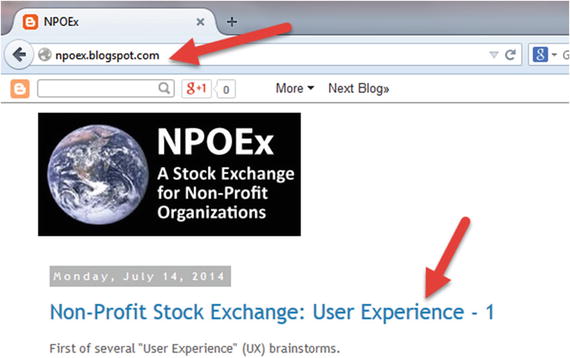
There’s a difference between the blog link and a link to individual blog posts. Click on the title of a blog post you made, and you’ll see a longer link. This is the one you’ll want to share on social media:

http://npoex.blogspot.com/2014/07/non-profit-stock-exchange-user.html
Tip
Visuals are good. Include a picture in the blog post. When you post to social, to get more notice, include a picture in your post. Technically you could post a photo to Facebook, and include a link in the post, but what you really want to do is include visuals in your original blog post. Then when you post to social media, in some cases (Facebook/LinkedIn), it gives you the option of having a visual preview. This will garner more attention, more clicks, and ultimately more data to play with.
Make your blog posts ongoing. For learning analytics, I recommend that you get in the habit of posting once a week to a blog (or web site) that is connected to Google Analytics, and then look back at it. To generate ongoing data, add the Follow by Email feature in Blogger. When people visit, they can sign up to get posts automatically when you post them. In theory, this should help you get some ongoing clicks.

Make Your Pitch
This chapter isn’t meant to replace my Introduction to Social Media Marketing book. I recommend you read that too, because it’s all connected. But we’re just taking a simple, quick tour of how to get some clicks.
So when you post to social, make a pitch for clicks. Tell people what you’re up to and invite them to click on the link below. Something like this:
Friends and colleagues, please click on this link. I’m doing a test for a book I’m writing to help people learn web analytics, in order to show readers how they can share their blog posts on social media. Every click will help generate some “data” that I can look at in the book. You’re also welcome to subscribe by e-mail if you’re interested in the topic. (Please feel free to pass this along.)
http://npoex.blogspot.com/2014/07/non-profit-stock-exchange-user.html
Post It to Social Media
Put your post on social media . Notice how Facebook picked up the image from the blog post in the preview.

You may not realize that you can do the same thing on LinkedIn.
When you log in, there should be a spot to share an update:

It’s worth trying .
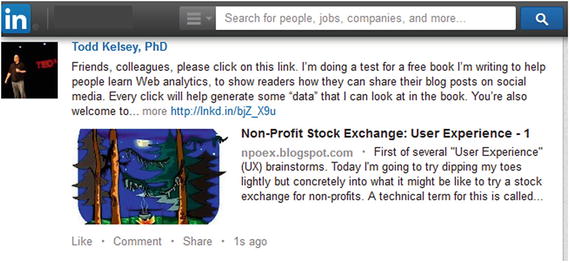
Promote Your Post
I get kind of an icky feeling even sharing this technique, but it’s built into Facebook, and it feels a bit like a mafia shakedown. See Introduction to Social Media Marketing (Apress, 2017) for my skeptical perspective on how advertising on Facebook has evolved.
Whether it is because there are too many posts by too many people, or whether Facebook has intentionally limited who sees your posts, the bottom line is that not as many people will see your posts on your personal profile as in the past, unless you pay Facebook to promote them.
The quickest, easiest way to get your posts noticed is to click the Promote link at the bottom of the post and pay the Facebook mafia:
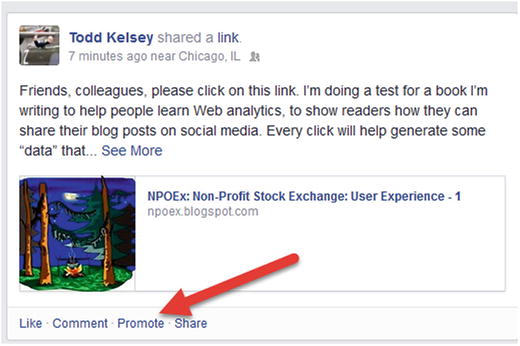
This extortion is probably worth the money, at least as a learning experience:
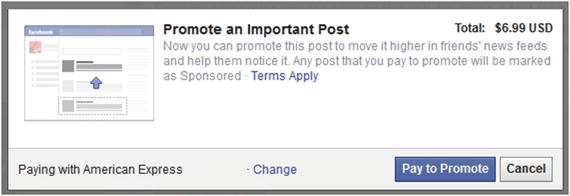
Enter your credit card information and click Pay to Promote:
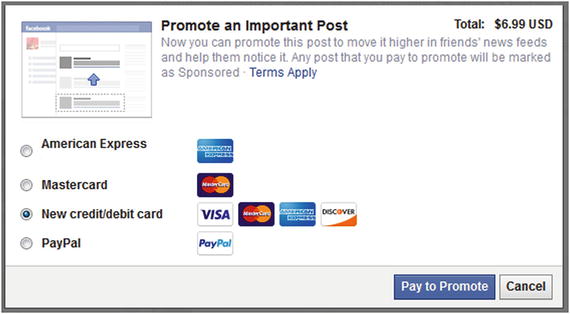
It’s a one-time, limited thing. A bit like blackmail. Blackmail payments have a way of growing, and not going away. So too with social networks’ interest in monetizing everything—even if you had the impression that it shouldn’t cost anything to share with the network of friends you built. I suppose Facebook provided the platform to build that network, but still. But for grins, lets give Facebook the benefit of the doubt. Personal social advertising is just like professional social advertising. You pay to get exposure.
Wait, isn’t social media supposed to be “free” advertising?
At any rate, when you pay Facebook to promote your post, it shows the word “Sponsored” at the bottom:
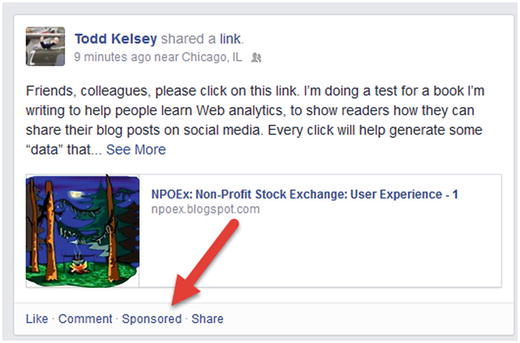
::Shudders ::
Make an Ad
Another way I suggest trying to add more clicks is a simple Facebook ad campaign. As much as Facebook ads have changed as Facebook has grown, it’s still probably easier to create a Facebook ad than a Google ad , for example. Although I should probably take a poll on that, from people who have tried both.
So we’re just going to take the simplest way possible through the process, without getting into specifics. It’s all about the data.
Go to https://www.facebook.com/ads/create and click on the Clicks to Website option:

Then, copy your trusty blog link, the one to the specific post, and paste it in the field :
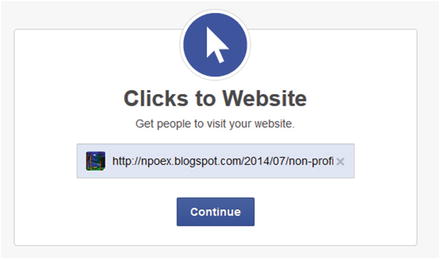
Until/unless Facebook changes, when you paste the link, it may flip you to another screen. Don’t be alarmed.
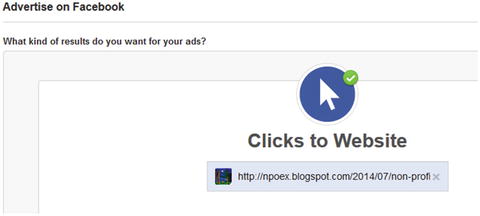
On the next screen, you’ll want to upload an image. It recommends a large image, and if you try to run the ad with a smaller image (like the one show here that Facebook picked up from the blog post), it won’t run the ad. If you’re just testing things, search for “Earth” on Google. Click the image link at the top of the Google page, right-click (Windows) or Ctrl+click (Mac), and then save the image to disk. You can use this image.
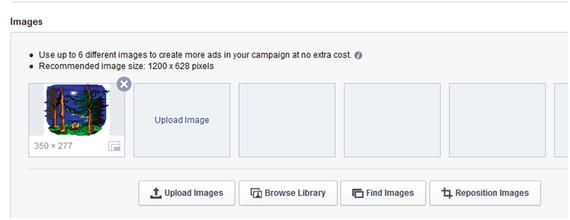
Tip
If you’re enjoying this detour on the way to analytics bliss, Chapter 2 of my Introduction to Social Media Marketing book covers a few basic tools for working with content, including images, and source of images.
When I tried a slightly larger image , it still didn’t work:
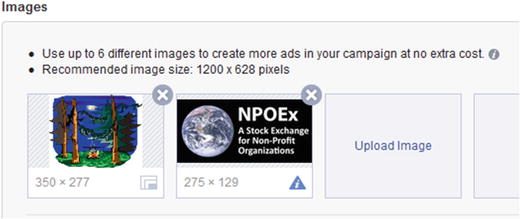
In the end, I just grabbed that “Earth” image, which was 300x300, and that worked.
After you have an image in place, type in a headline and text for the ad. It’s an art and a science, but just put in something short and direct with a call to action. The little numbers on the right tell you how many characters you have left to type in. There are limits .
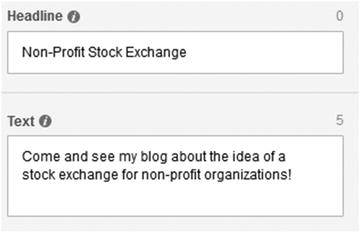
Next, you pick an audience. You could send it to completely random people, but you’ll end up with more clicks if you indicate some interests.
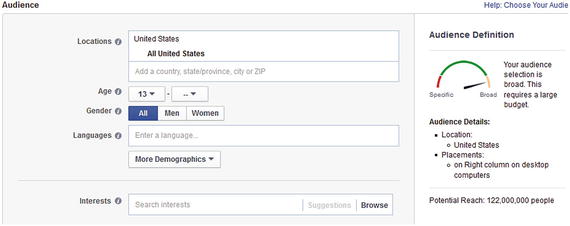
Try clicking in the Interests field and typing in an interest, such as “social media marketing ”, “web analytics”, or whatever your blog is about. If you don’t have a topic, make it about online marketing, read all the free books, and keep posting!
As you type, options will come up and you can click on them:
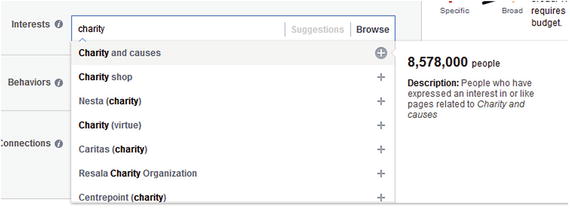
Narrow things down a bit and then review the budget at the bottom:
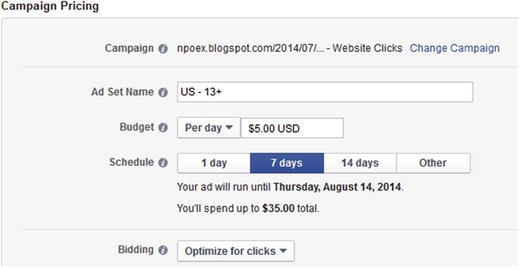
If you want to limit your investment , you can click on Per Day and switch to a lifetime budget.

Then click on Place Order:
If you get a message like this, you might need to upload a new image:

(You might need to click on the “X” by any image you uploaded that isn’t large enough. You can use multiple images to see which generates the best clicks.)
You should get a confirmation, and you can click Continue:

If you want to come back later and see how things are doing in Facebook , try this link: https://www.facebook.com/ads/manage .
(If you want to know more about Facebook ads, check out my Introduction to Social Media Marketing book).
The overall point is that a Facebook ad may generate more clicks and attention than your personal social posts. The more clicks, the more data you have for this learning experience. All the better.
And if you plan on running a month-long or quarter-long experience (Q1, Q2, etc.—three months), or even a semester-long experience, you can always set a monthly budget and an end date, and just let the thing run. If you do something like that, be sure to blog regularly, such as once a week. Follow the tips to add “Follow by Email”. See how things go. In some cases, web analytics is a job unto itself, but it’s fair to say that in many cases it’s a skill anyone can learn, including people who are responsible for getting the traffic in the first place .
Learning More
Here are a few more resources for getting more traffic/contacts:
Web Traffic 101: How to Get More Customers – Fast: http://blog.leadpages.net/web-traffic-101-how-to-get-more-customers-fast/
10 Ways to Get Traffic for Free!: http://www.webconfs.com/how-to-get-traffic-article-30.php
How Do I Import Friends from Other Accounts?: https://www.facebook.com/help/189976267783273
“How to Import Contacts into Twitter: http://www.dummies.com/how-to/content/how-to-import-contact-lists-to-twitter.html
How to import contacts into LinkedIn: https://www.linkedin.com/help/linkedin/answer/4214?query=import%20contacts%20into%20linkedin
Conclusion
Congratulations on exploring how to generate analytics! It’s important to set these things in motion, partly because having real, live data is more fun than just looking at a screenshot. Next up, we’ll look at how to review performance.
